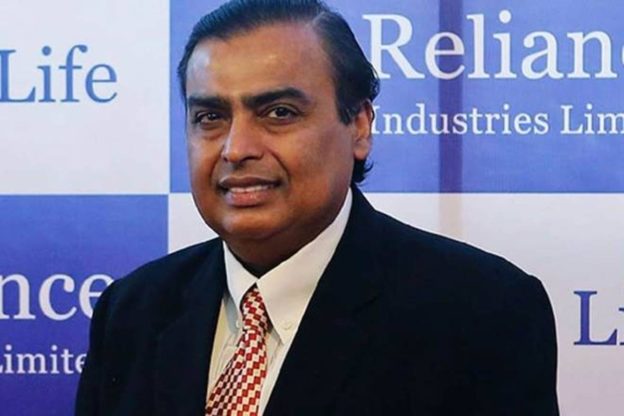CHENNAI: Mukesh Ambani’s Reliance Industries Ltd (RIL) has made much of its shiny new zero-net-debt status over the past year.
Having raised a record Rs 2.6 lakh crore of capital in a little under 200 days through stake sales and rights issues, the company has not just declared zero net debt in its annual report for financial year 2020-21 (FY21)—it has declared negative net debt.
In other words, it says that as of March 31, 2021, it had more than enough liquid assets to cover all its debt.
But scratch the paint a little and things aren’t what they seem.
For one thing, estimates of RIL’s effective consolidated net debt by various brokerages disagree with the company’s. At a hefty Rs 64,000 crore-Rs 99,000 crore, these estimates aren’t small either—and a far cry from RIL’s declared position.
Reckoning net debt
To figure out why such wide divergences exist between the company’s annual report and brokerages’ estimates, we need to understand what net debt is.
At its core, it is a measure of liquidity and answers a simple question about financial health: If every creditor of a company were to demand immediate repayment of all loans one fine day, would it have enough cash to pay them all?
Net debt is usually calculated by deducting liquid assets such as cash and easily marketable securities from total debt (or gross debt). While cash is the most liquid of assets, marketable securities can be easily converted into cash and are usually traded on recognised financial markets—like listed stocks and gilt government securities.
Disagreements with RIL’s declared net debt position are driven by many factors, but the company’s “rather debatable” definition of marketable securities is a major one, says one stock analyst requesting anonymity.


Not so marketable
Going by its FY21 annual report, RIL arrives at its consolidated net debt by deducting cash and marketable securities (CMS) from gross debt.
Helped along by the record capital raised last year, the company has declared steep falls in both gross and net debt—from Rs 3.36 lakh crore and Rs 1.61 lakh crore respectively at the end of FY20 to Rs 2.51 lakh crore and a negative Rs 2,208 crore as of March 31, 2021.
But in the case of net debt, this deleveraging is driven almost entirely by the marketable securities component, which rose from Rs 1.75 lakh crore in FY20 to Rs 2.54 lakh crore.
Cash and equivalents, on the other hand, fell from Rs 30,920 crore to Rs 17,397 crore.
Footnotes say these marketable securities include Rs 1.52 lakh crore current investments made by the company and ‘Other Marketable Securities’ worth another Rs 44,333 crore.
But over two-thirds of these current investments (Rs 1.15 lakh crore) are in unquoted mutual funds.
Unquoted securities are referred to as such because they aren’t traded on recognised financial markets and, consequently, may not be very easily converted into cash.
Included among the other marketable securities, meanwhile, are RIL’s investments in two unlisted associate companies: Jio Digital Fiber (JDFPL) and Summit Digital Infra (SDIPL).
The company holds non-convertible debentures (debt instruments) worth Rs 37,222 crore and preference shares worth Rs 77,984 crore in JDFPL and SDIPL, but it isn’t clear which of these are included among other marketable securities.
Inclusions and exclusions
Another item in the CMS component qualifies as a debatable inclusion: the call money receivable from last year’s rights issue.
Call money is a type of loan that has to be paid back when the lender asks for it.
Investors who were allotted shares in the rights issue have to pay RIL Rs 53,124 crore in total, but only 25 per cent (Rs 13,281 crore) was required to be paid upfront in FY21.
The rest of the Rs 39,843 crore call money, for which RIL has placed two calls already, is to be paid in two instalments this year. But RIL has included these receivables in the CMS component for FY21.
“This,” CLSA notes, “helped it turn net cash”.
It isn’t all about inclusions, though, and one major exclusion on the debt side also contributes to the divergence in net debt estimates.
RIL has to pay the government around Rs 37,000 crore for new spectrum purchases, but CLSA says that since this spectrum was not allocated till March 2021, “unpaid spectrum has not yet been accounted for”.
“Adjusted for the rights issue money, unpaid spectrum.., along with our estimate of capex creditors, consolidated net liabilities stood at $12 billion (around Rs 87,500 crore),” it added.
Such estimates vary across brokerages. Jefferies pegs RIL’s adjusted net debt at the end of FY21 at Rs 64,164 crore.
Kotak Institutional Securities puts effective net debt at Rs 59,400 crore, but only if the money receivable from the rights issue is taken into account.
Excluding that, this figure rises to Rs 99,200 crore.
But Kotak analysts also note that the company has utilised fresh capital and cash profits to reduce effective net debt (including capex creditors) by Rs 1.89 lakh crore; cut down working capital by Rs 50,700 crore; pare other liabilities by Rs 20,100 crore; and fund Rs 79,700 crore of capital expenditure.
All said, RIL has managed massive reductions in its debt levels. But has it really become a zero-net-debt firm?
The answer, going by third party estimates, is: Not really. Or, at the least, not yet.
https://www.newindianexpress.com/business/2021/jun/05/decoded-reliance-industriesshaky-zero-net-debt-boast-infy21-report-2312263.amp





